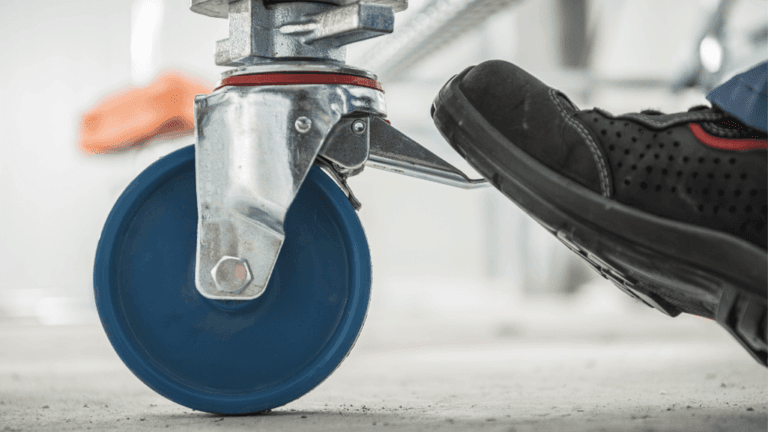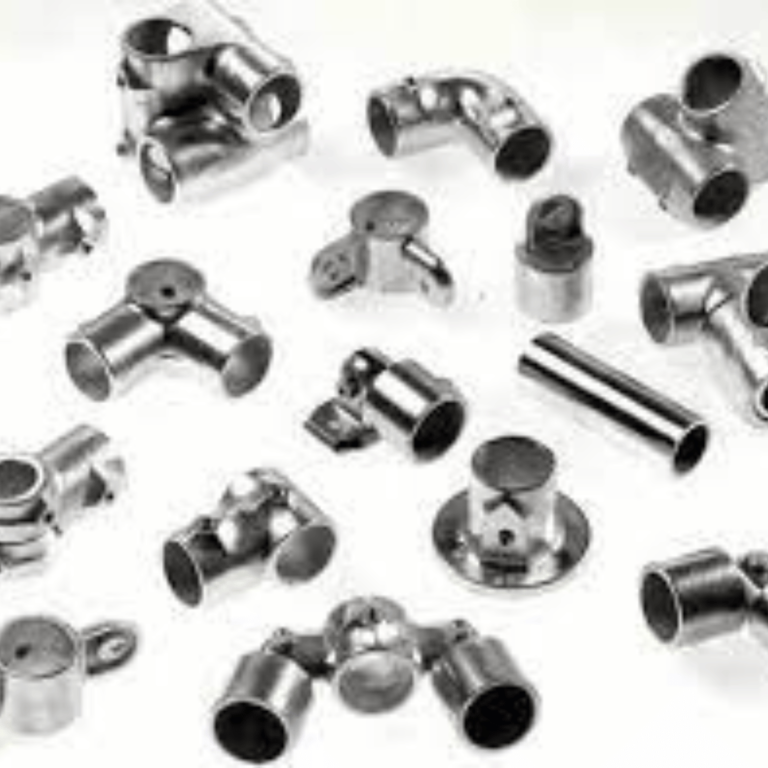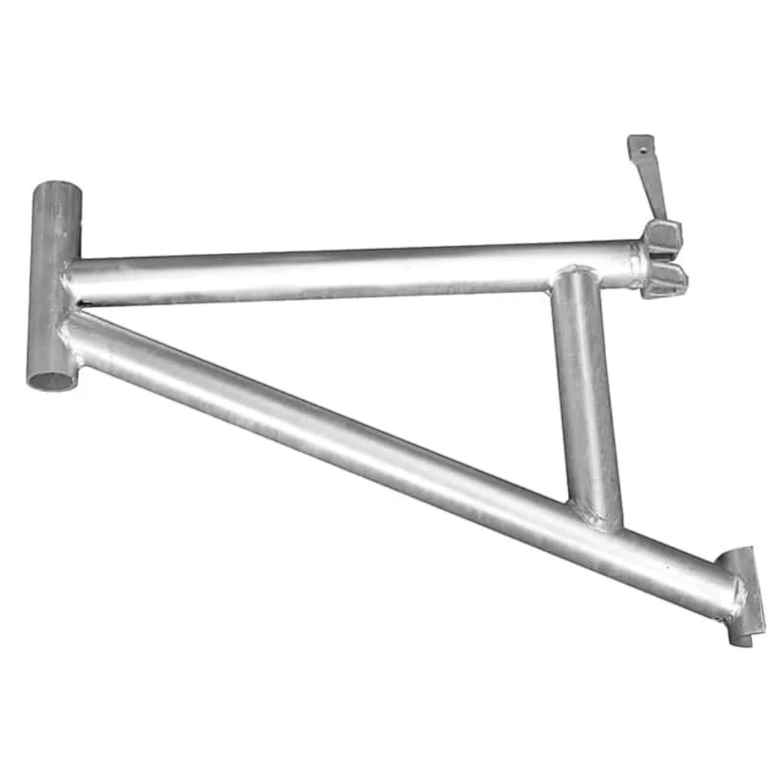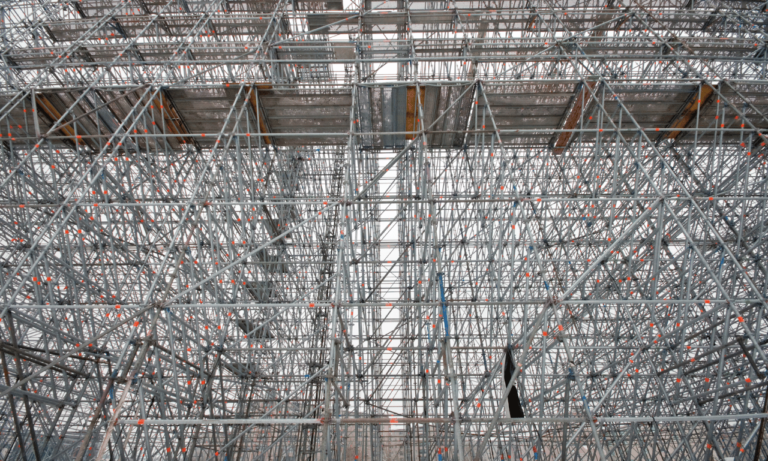Phone:
(+65)8319-0742
The realm of tissue engineering is evolving with advancements in Scaffold Fluid Dynamics (SFD), which scrutinizes the vital interactions between fluid flow and scaffold structures. Crucial to this scientific endeavor is the fluid flow analysis within the intricate porous networks of 3D biocompatible scaffolds. These dynamic interactions are a cornerstone of bone tissue engineering, influencing cellular responses and the overall success of tissue regeneration. Studies present pivotal findings, for example, PMC9211004’s exploration into a hydroxyapatite scaffold, bringing to light how fluid-induced shear stress is instrumental in osteoblastic differentiationâa process integral to bone healing. This highlights the importance of computational fluid dynamics (CFD) and industrial scaffold design, both of which are leveraged to simulate and optimize environments that foster natural tissue development. Similarly, engineering simulations aid significantly in SFD, enabling designers and researchers to emulate the complex internal fluid mechanics within the scaffold architecture, which mirrors the natural porous nature of bone, creating an optimum setting for cell growth and differentiation.
Such insights direct the advancements in biomorphic scaffolds, showing how the application of controlled microfluidic systems within bioactive scaffold designs can bolster their performance. But it doesn’t stop there; thorough fluid mechanics analysis augmented by cutting-edge technology can refine the emulation of the natural bone environment. This ensures the cellular inhabits are subjected to physiological conditions which pragmatically promote osteogenesis.
Key Takeaways
- Understanding the impact of Scaffold Fluid Dynamics is crucial for enhancing bone tissue regeneration.
- Fluid flow analysis provides valuable insights into the microenvironment of bone scaffolds.
- Computational fluid dynamics serve as a powerful tool in designing industrially viable scaffolds.
- Engineering simulations optimize scaffold designs by predicting fluid mechanics within scaffold structures.
- Fluid-induced shear stress is found to significantly influence osteoblastic activity and differentiation.
- The integration of fluid mechanics in scaffold design is key to replicating the natural bone healing environment.
The Vital Role of Scaffold Fluid Dynamics in Tissue Engineering
In the innovative field of tissue engineering, the design and manipulation of scaffold fluid dynamics are pivotal to the progression of bioengineering. Understanding how these dynamics impact research and clinical application, particularly involving bioactive scaffold structures, is vital for honing therapeutic interventions in bone tissue repair and regeneration.
How Scaffold Fluid Dynamics Influence Cellular Behavior
At the core of scaffold design is multiphase flow simulation, a process that meticulously models the interaction between scaffold structure and fluid flow. This modeling is integral to bioengineering, as it predicts how fluid shear stress will affect cells within the scaffold environment. Scaffold fluid dynamics essentials are therefore not just about supporting cellular adhesion and growth, but are instrumental in moderating cellular environments to specific mechanical cues vital for stimulating tissue formation.
Benefits of Hydrodynamic Shear Stress in Scaffold Design
Hydrodynamic shear stress is an influential element in scaffold fluid dynamics, one that leverages fluid mechanics analysis to fine-tune the internal ecosystem of tissue scaffolds. Within the tissue engineering discipline, shear stress induced by fluid flow is increasingly recognized for its role in directing osteogenic differentiation, critical for bone tissue engineering. A precise balance is needed to replicate the natural bone environment, where fluid shear stress can be harnessed to encourage cellular responses conducive to healing and tissue development.
| Design Parameter | Importance in Tissue Engineering | Effect on Fluid Shear Stress |
|---|---|---|
| Scaffold pore size and geometry | Dictates cell attachment and proliferation | Influences magnitude and distribution of shear stress |
| Interconnectivity of scaffold pores | Ensures nutrient flow and waste removal | Allows uniform shear stress and prevents stagnant zones |
| Material properties of scaffold | Affects biocompatibility and mechanical stability | Impacts the resilience to deformation under fluid flow |
| Flow rate within scaffold | Regulates oxygen and nutrient delivery | Determines the intensity of shear stress experienced by cells |
By leveraging the interconnected realms of scaffold fluid dynamics essentials, tissue engineering, and computational simulations, stakeholders in bioengineering can create more effective and responsive tissue scaffolding systems. Such systems, when exposed to controlled fluid shear stress, demonstrate potential in revolutionizing the success rate of bone regeneration therapies.
Unveiling the Complex Network of Scaffold Micro-Channels

At the heart of tissue engineering advances lies the industrial scaffold design, particularly the innovation of bioactive scaffolds characterized by their intricately woven micro-channel networks. These channels not only serve as passageways for nutrient delivery and waste removal but also play a pivotal role in the mimicry of bone fluid dynamics, an essential aspect of natural bone functionality. Fluid flow analysis is employed to ensure that the movement of fluids through these microstructures accurately reflects physiological conditions for sustaining cell vitality.
The utilization of computational modeling in scaffold design has become a cornerstone in developing industrial-scale bioactive scaffolds. This predictive approach optimizes cellular microenvironments within the scaffold architecture, enhancing tissue regeneration potential. Furthermore, microfluidic system principles are harnessed to instill dynamic flow resistance, which supports a stable yet responsive environment for cell attachment and proliferation.
To illustrate these concepts, let’s examine the key characteristics of these bioactive scaffold designs:
- Controlled nutrient delivery and waste management
- Simulation of natural bone’s fluid flow dynamics
- Enhanced mechanical and structural properties
- Optimized cellular microenvironment for proliferation and differentiation
Below is a comparison between classical and bioactive scaffold designs with respect to their micro-channel network properties:
| Scaffold Type | Micro-Channel Complexity | Fluid Flow Resistance | Nutrient Transport Efficiency | Waste Removal Efficacy |
|---|---|---|---|---|
| Classical Scaffold | Simple | Low | Moderate | Moderate |
| Bioactive Scaffold | High | Optimized | High | High |
Computational modeling brings an unprecedented level of precision to the industrial scaffold design process. By integrating these advanced technologies, engineers and scientists are able to predict how scaffolds will perform in real-world applications, tailoring their designs to meet the exact needs of tissue regeneration. Hence, the synergy between computational sciences and biological engineering is crafting a future where microfluidic systems and bioactive scaffolds converge, setting a new paradigm in tissue engineering.
Scaffold Fluid Dynamics

In the rapidly evolving field of tissue engineering, the integration of computational fluid dynamics (CFD) into scaffold design is revolutionizing the way researchers and engineers approach the creation of biostructures. These advanced engineering simulations enable the meticulous tailoring of fluid flows within the scaffold to meet the biological needs of cells, supporting effective tissue regeneration. The application of CFD software is seminal in optimizing scaffold performance, offering insights into the effects of fluid dynamics on these vital structures.
Computational Modeling in Scaffold Design
The complexities of scaffold architecture, namely their highly irregular pore geometries, necessitate a robust approach to engineering simulations. Here, CFD stands out as a crucial tool. By simulating various conditions, CFD software facilitates the prediction of fluidic environments within scaffolds, ensuring the mechanical stimulation, such as wall shear stress on the cellular level, remains within physiologically appropriate limits. This is instrumental in guiding cells towards desired responses and functions.
Impact of Fluid Flow on Scaffold Performance
Taking scaffold design to the next chapter involves a deep dive into turbulence simulation to understand the nuances of fluid behavior. It’s not just about the macro structures but also how fluid dynamics operate on the microscale â an area often explored through the lens of scaffold fluid dynamics essentials. Adjusting for these small-scale fluid interactions is pivotal for enhancing the mechanical stimuli applied to the encapsulated cells, ultimately influencing their differentiation pathways and extracellular matrix production.
Bringing these insights together, it’s evident that the fabric of modern tissue engineering is being woven by the threads of computational fluid dynamics. With such precise computational tools at oneâs disposal, engineers can confidently calibrate the scaffold’s structure to foster an optimal environment for cellular activity and tissue regeneration, marking a milestone in personalized medicine and scaffold-based therapies.
Bioreactors and Their Connection to Fluid Shear Stress
In the intricate dance of tissue engineering, bioreactors emerge as a critical component, meticulously orchestrating the conditions necessary for cellular orchestration and development. These sophisticated devices are not just containers but pivotal enablers of fluid mechanics analysis, offering scientists the coveted ability to replicate in vivo environments. By hosting cells within three-dimensional scaffolds, bioreactors lay down the path to innovate bone tissue regeneration through precise fluid dynamics management.
Designing Bioreactors for Optimal Fluid Dynamics
Bioreactor design stands at the convergence of engineering and biologyâa realm where computational fluid dynamics plays a significant role. The scaffold fluid dynamics essentials are embedded into the bioreactor’s core, ensuring that the mimicry of physiological flows goes beyond just mechanical mimicry; it becomes a dynamic stage for cellular interaction and growth. Crafting bioreactors that master these facets of fluid movement results in the modification of biological processes conducive to sustained cellular proliferation and differentiation.
Flow-Induced Shear Stress and Osteogenic Differentiation
The manipulation of flow-induced shear stress within these meticulously designed bioreactors influences the fate of mesenchymal stromal cells (MSCs). This is where the scaffolds, enriched by osteogenic differentiation, respond to the symphony of forces, transducing mechanical stimuli into biochemical signals that spark the quintessential activity of bone formation. With a command over multiphase flow simulation and the subtleties of shear stress distribution, bioreactors can thus profoundly impact the efficacy of scaffold-based tissue regeneration protocols.
Bioreactors and Their Connection to Fluid Shear Stress
What is Scaffold Fluid Dynamics?
Scaffold Fluid Dynamics (SFD) refers to the field of study concerned with how fluid flow interacts with scaffold architectures. It encompasses fluid flow analysis, computational fluid dynamics, and other engineering simulations to understand and predict the fluid mechanics within industrial scaffold designs crucial for various applications, including biomedical engineering and tissue regeneration.
Why is computational fluid dynamics important in industrial scaffold design?
Computational fluid dynamics (CFD) plays a critical role in industrial scaffold design by allowing engineers to simulate fluid flow through scaffold structures. This helps in predicting fluid behavior, optimizing the scaffold’s performance, and confirming that the mechanics of fluid flow align with the physiological conditions required for the intended tissue engineering applications.
How do engineering simulations contribute to fluid mechanics analysis in SFD?
Engineering simulations provide a detailed visualization and understanding of fluid behavior in complex scaffold structures. By modeling different scenarios and analyzing the results, engineers and researchers can study the effects of fluid mechanics on scaffold function, optimize designs for better performance, and ensure that the scaffold will support the intended biological processes.
How do Scaffold Fluid Dynamics influence cellular behavior?
In tissue engineering, Scaffold Fluid Dynamics influence cellular behavior by subjecting cells to fluid-induced shear stress (FSS), which affects cell morphology, proliferation, and differentiation. Carefully engineered fluid flow within the scaffold can thus stimulate specific cellular responses that are essential for tissue growth and regeneration.
Why is hydrodynamic shear stress beneficial in scaffold design?
Hydrodynamic shear stress is beneficial in scaffold design because it can mimic the physiological conditions cells experience within the body, particularly in bone tissue. Applying the correct levels of shear stress can stimulate osteoblastic differentiation and promote the formation and healing of bone tissue, making it a critical factor in the design of scaffolds for regenerative medicine.
What role does computational modeling play in analyzing the scaffold’s microfluidic system?
Computational modeling is pivotal in analyzing a scaffold’s microfluidic system as it helps predict how fluids will interact with the intricate micro-channels within the scaffold. These predictions inform scaffold designs that facilitate optimal nutrient delivery and waste removal, both of which are crucial for supporting living cells and replicating a biomimetic environment.
How does industrial scaffold design benefit from understanding micro-channel networks?
An understanding of the micro-channel networks is essential in industrial scaffold design to create bioactive scaffolds that mimic the natural porous structure of bone. This ensures that the scaffold provides a conducive environment for cell attachment, proliferation, and differentiation, which are necessary for effective tissue engineering.
How does computational modeling enhance scaffold design?
Computational modeling enhances scaffold design by facilitating the precise prediction of fluid flows and shear stresses within scaffold structures. It allows designers to tailor the physical characteristics of scaffolds to meet the specific needs of various tissue engineering applications, ensuring scaffold efficacy and cell viability.
What impact does fluid flow have on scaffold performance?
Fluid flow has a significant impact on scaffold performance by affecting the distribution of mechanical forces within the scaffold, which in turn influences cellular activities such as adhesion, migration, and differentiation. Properly controlled fluid flow can improve nutrient transport and waste removal, enhancing the overall effectiveness of the tissue engineering process.
Why is it important to design bioreactors for optimal fluid dynamics?
Designing bioreactors for optimal fluid dynamics is crucial because these devices are used to culture cells in an environment that simulates in vivo conditions. By fine-tuning the fluid dynamics, a bioreactor can deliver a range of shear stresses, which are essential for encouraging specific cell behaviors necessary for successful tissue development and regeneration.
How does flow-induced shear stress contribute to osteogenic differentiation?
Flow-induced shear stress contributes to osteogenic differentiation by mechanically stimulating the cells within the scaffold. This stimulation leads cells to activate signaling pathways that promote their development into osteoblasts, the bone-forming cells that are vital for bone tissue engineering. Consistent and controlled shear stress applied through fluid dynamics within bioreactors has been shown to significantly enhance this process.

Understanding Scaffolding Psychology Essentials
In the dynamic intersections of educational psychology and developmental psychology, the concept of Scaffolding…

Top Educational Support Strategies for Teachers
As educators, maximizing academic success hinges on implementing effective educational support strategies…

Understanding What is Scaffolding in Child Development
When it comes to nurturing the minds of the young, What is Scaffolding in Child Development is a question…

Effective Instructional Scaffolding Strategies
Unlocking the full potential of each student is the cornerstone of successful education. With effective…

Understanding Vygotsky Scaffolding in Education
The concept of Vygotsky Scaffolding has become a cornerstone within the realm of educational scaffolding,…
No posts found

















